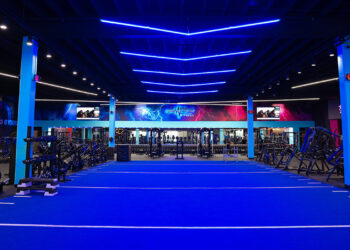Shay Amir, a co-founder and CEO of Spivi, shares how technology can enhance the indoor cycling experience.
Many facilities face the harsh reality that times are changing, and user experience is most important to this generation of members. Indoor cycling is one of the better examples of how an experience can look so different from one place to another. Some people love it while some have never tried it before. This is distinct where technology can genuinely help up your game and drive more business through the door.
If you’re like most people in our industry, you would agree we’re in somewhat of a ‘technology overload’ dilemma. Recent studies show the average fitness business has over six different pieces or systems of technology running simultaneously.
Integrating the right technology in indoor cycling classes can not only significantly upgrade the user experience in various ways, but it can also work with other software solutions you use today to help you orchestrate an excellent member experience.
By embracing modern technological advancements, gyms can create more engaging, interactive, and effective workouts for participants and the good news is people are willing to pay more for a great experience.
Here are some ways technology can enhance the indoor cycling experience:
Interactive Displays and Virtual Environments:
Placing class participants as avatars on dynamically created virtual cycling routes — such as mountain terrains, cityscapes or countryside settings — makes the workout more engaging and visually appealing.
Gamification and Competitive Elements:
Leaderboards display real-time performance on group and individual aspects, allowing participants to compare their performance with others and fosters a sense of healthy competition. Challenges and achievements — such as virtual races or milestones — reward participants when they achieve certain goals.
Performance Tracking and Analysis:
Giving members access to personal dashboards that track their performance metrics over time helps them set and achieve goals, see results and earn quick wins. Members can compare their current performance with past sessions, encouraging continual improvement.
Real-time Metrics:
Displaying real-time data such as speed, distance, power and heart rate in class not only keeps participants informed about their performance but also helps instructors in class to keep the group engaged toward shared goals.
Feedback Systems:
Post-class analysis offers insights and suggestions for improvement based on the member’s performance. Technology can also help tailor workouts to individual fitness levels, ensuring everyone gets an optimal experience.
Community Building:
Allow participants to connect, share their achievements and challenge each other, promoting community.
Combining virtual reality, real-time performance tracking, data analytics, and interactive visuals using technology creates attractive and effective group workout sessions. Choosing technology that offers a range of features and benefits will elevate the fitness experience for members and instructors, and integrate with membership software that allows easy booking of bikes, reminders and scheduling of classes.
The integration of an immersive fitness gamification platform in indoor cycling classes not only enhances user experience but also adds value by providing data-driven insights, enabling community and ensuring workouts are both effective and enjoyable. By leveraging these technologies and utilizing existing wearables, equipment and sensors in the club, gyms can position themselves as modern and forward-thinking establishments, appealing to a broader range of gym goers.










